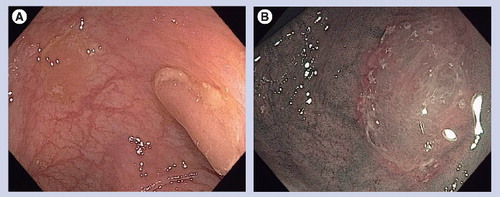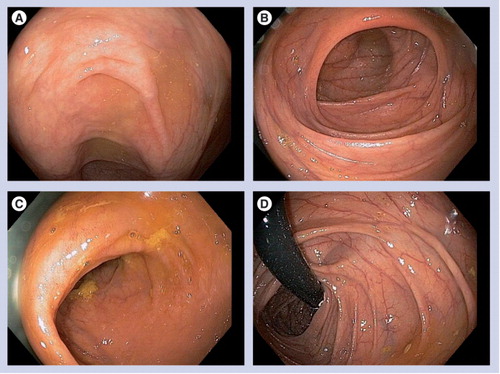Figures & data
Dotted lines represent 2.5 mm of elevation above the normal mucosal surface.

(A) White light photograph of two serrated lesions in the transverse colon. Note the mucus covering on the lesions. The color is similar to the surrounding mucosa, and the lesion obscures the vascular pattern of the normal colon. (B) Narrow-band imaging photograph of a serrated lesion. The mucus cap has a pink colon.

(A) Appendiceal orfice. (B) Ileocecal valve. (C) Terminal ileum. (D) Ascending colon in retroflexion.
